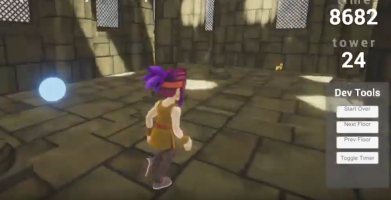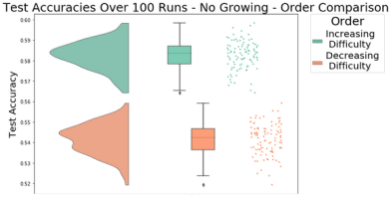Main content
Top content
Using Deep Reinforcement Learning to Teach a Machine a World Understanding
For my PhD I am working on several techniques to try and teach a machine a semantic world understanding in a largely unsupervised fashion. I believe that this is very important to understand human cognition which is also mainly developed unsupervised in the first years of life and later in life with little supervision.
Top content
Viviane Clay

Tel. +49 (0)541 969-3353
Fax +49 (0)541 969-2246
Room 50/206
Institute of Cognitive Science,
Wachsbleiche 27,
49090 Osnabrück, Germany
I think that a very important aspect of cognition is embodiment and believe that many of the shortcomings of current neural networks, such as vulnerability to adversarial attacks, originate from the lack of embodiment. Deep reinforcement learning is a great method to test this theory and to investigate how agents can develop an internal representation of the world with little or no rewards from the external environment.
This work is still at an early stage but here you can find some first results of my agent that I trained for the Unity Obstacle Tower Challenge.
I am especially interested in training RL agents without any rewards using mechanisms such as intrinsic curiosity. Through my background in cognitive science and neurobiology I am implementing theories about the human brain into my machine learning algorithms. I use ideas such as predictive coding and replay to move from classical machine learning techniques to more biologically motivated models.
Dissertation
Clay, V. The Role of Task and Environment in Biologically Inspired Artificial Intelligence: Learning as an Active, Sensorimotor Process. (2022). https://doi.org/10.48693/108.
Publications
Clay, V, König P, Kühnberger KU, Pipa G (2021a). Learning sparse and meaningful representations through embodiment. Neural Networks 134, pp. 23–41. doi: 10.1016/ j.neunet.2020.11.004.
Code
König, Sabine U., Ashima Keshava, Viviane Clay, Kirsten Rittershofer, Nicolas Kuske, and Peter König (2021). Embodied Spatial Knowledge Acquisition in Immersive Virtual Reality: Comparison to Map Exploration. Frontiers in Virtual Reality 2, p. 4. issn: 2673- 4192. doi: 10.3389/frvir.2021.625548.
Clay*, V., Schrumpf*, J., Tessenow*, Y., Leder, H., Ansorge, U., & König, P. (2020). A quantitative analysis of the taxonomy of artistic styles.
Journal of Eye Movement Research, 13(2).
https://doi.org/10.16910/jemr.13.2.5
Clay V, König P and König S (2019). Eye tracking in virtual reality. Journal of Eye Movement Research, 12(1). https://doi.org/10.16910/jemr.12.1.3
König SU, Clay V, Nolte D, Duesberg L, Kuske N and König P (2019). Learning of spatial properties of a large-scale virtual city with an interactive map. Frontiers in human neuroscience 13, p. 240. doi: 10.3389/fnhum.2019.00240
Other
Clay, Viviane (2020). Data from Neural Network Training in the Obstacle Tower Environment to Investigate Embodied, Weakly Supervised Learning. Mendeley Data. doi: 10.17632/ZDH4D5WS2Z. 2.
Clay, Viviane, Peter König, Gordon Pipa, and Kai-Uwe Kühnberger (2021b). Fast Concept Mapping: The Emergence of Human Abilities in Artificial Neural Networks when Learning Embodied and Self-Supervised. arXiv preprint arXiv:2102.02153




